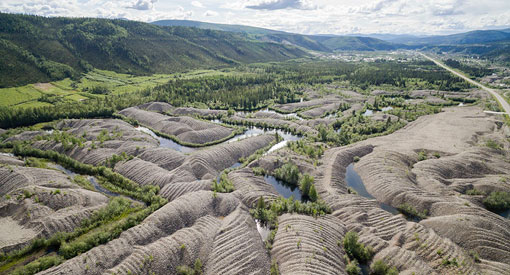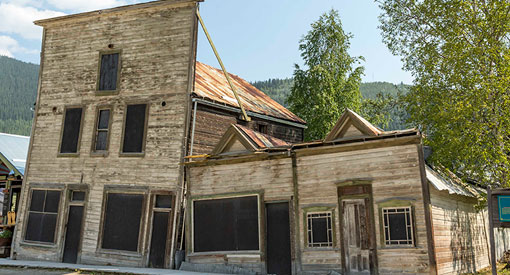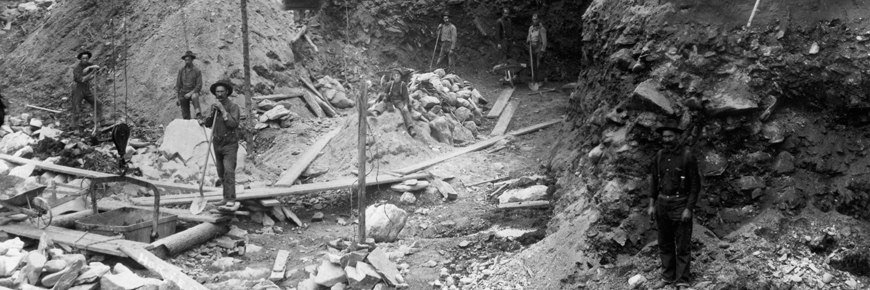
Discovery Claim National Historic Site
Klondike National Historic Sites
Reasons for national historic significance
Discovery Claim was declared a national historic site because it is the site where gold was discovered on the afternoon of August 16, 1896, the event which triggered the Klondike Gold Rush. Economically and administratively, the site marks the beginning of the development of the Yukon. For Aboriginal people, this piece of land is an affirmation of their cultural values and world view. From a western perspective, the site affirms the 19th-century belief that through hard work and perseverance one could rise from poverty to riches.
Background
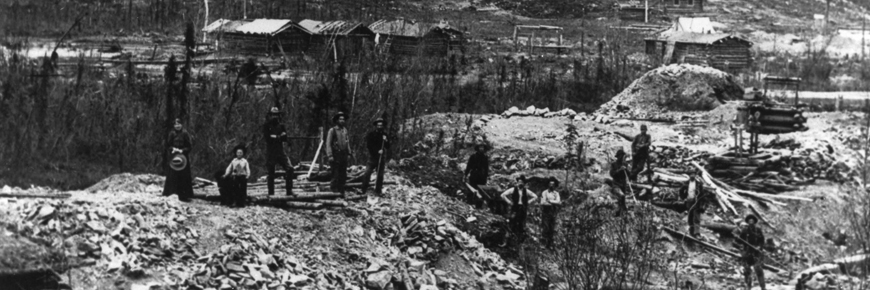
Discovery Claim National Historic Site is the place where gold was discovered in 1896, triggering the Klondike Gold Rush. It is a legally defined mining claim measuring 500 by 2000 feet located on Bonanza Creek (known as Rabbit Creek before the discovery), a tributary of the Klondike River near Dawson City, Yukon. The site is in a deep valley which, since the discovery, has been mined heavily, first by hand then with mechanized equipment. Large dredge tailings fill the valley and scars are still visible on the hillsides.
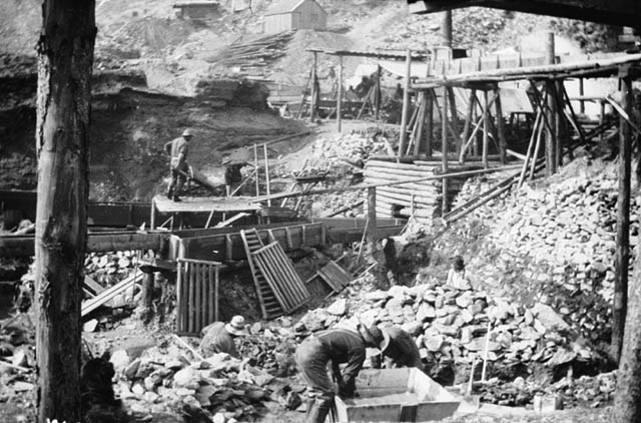
The discovery story’s details vary, but it is generally held that Keish / Skookum Jim Mason, of the Tagish First Nation, discovered the gold. Skookum Jim was accompanied by his nephew, Káa Goox / Dawson Charlie, his sister Shaaw Tláa / Kate, and her husband, American prospector George Carmack. The men all staked claims, later registering them at the town of Forty Mile. Due to racial attitudes of the time George registered the discovery claim in his name, as a claim made by a First Nation person might not be recognized.
Within days of the strike, Bonanza and Eldorado creeks were staked from end to end. When news reached the outside world the Klondike Gold Rush was on. The valley became the scene of hundreds of excited people tearing up the creek beds. Soon every creek and hillside in the Klondike was being worked, and for some the gold poured out in what appeared to be an endless stream. But, after a few short years, the easy gold ran out. The 1899 gold strike in Nome, Alaska, lured miners away. One by one, individual miners sold out to large companies who installed dredges on the creeks.
Industrial mining of Bonanza Creek and the Discovery Claim continued until the 1950’s. The Discovery Claim has changed hands over the years. Today, the Klondyke Centennial Society owns the claim and they work together with Parks Canada and the Yukon Government to manage it. Visitors to the claim experience the place where the Klondike Gold Rush began, via a self-guided interpretive trail featuring replica mining equipment.
Klondike goldfields
Discovery
Tipped off by veteran prospector Bob Henderson, George Carmack and his fishing partners, Skookum Jim and Tagish Charlie, searched the creek gravels of Rabbit Creek. On August 17, 1896 they found gold and staked the first four claims. A few days later at Forty Mile, Carmack registered the Discovery Claim in his own name, and one each for Charlie and Jim. Skookum Jim was sent to guard the claims on what Carmack renamed Bonanza Creek. Within days Bonanza and Eldorado creeks had been staked from end to end, and when the news reached the outside the Klondike Gold Rush was on.
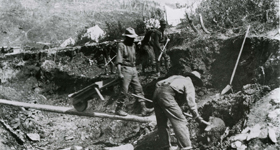
Gold rush
The Klondike valley became the scene of hundreds of excited men tearing up the creek beds. Each claim was 500 feet (152 m) wide. Smoke filled the air as fires smoldered in the shafts to thaw frozen ground. Hand-turned windlasses creaked as the buckets of half frozen muck were dumped out on the tailing piles, ready to be sluiced. Soon every creek and hillside in the Klondike was being worked and the gold poured out in what appeared to be an endless stream.
After the gold rush
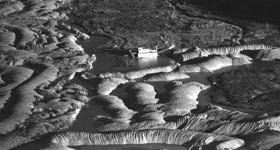
One by one individual miners sold out to large companies who installed dredges on the creeks. The conveyor buckets dug to bedrock and turned the valleys into mounds of gravel. Massive tailing piles are reminders of the dredging operations.
Once again the valleys are quiet and the trees and shrubs are covering scars. There are small mining operations scattered here and there, and some gold is still to be found. There is a dwindling number who believe that somewhere in these ridges or valleys a mother lode is waiting to be discovered. Meanwhile the Eldorado and Bonanza quietly murmur their way to join the Klondike River, as serenely as they did that summer of 1896.
Milestones
August 16, 1896
Gold was discovered by Keish / Skookum Jim Mason.
August 17, 1896
George Carmack, Skookum Jim and Dawson Charlie staked claims.
September 24, 1896
George Carmack registered their claims at Forty Mile.
1900
After four years of mining the Discovery Claim, Jim and George’s partnership dissolved when George left Jim’s sister, Kate.
1903
Lewes River Mining and Dredge Company dredged the claim.
1904
Skookum Jim sold his claim to the Lewes River Mining Company.
August 17, 1911
The first Discovery Day holiday was celebrated in Dawson City. Today, the Yukon-wide public holiday is on the Monday closest to August 17.
1926
The Historic Sites and Monuments Board of Canada (HSMBC) approved the commemoration of the discovery of gold in Yukon.
1959
HSMBC recommended commemoration of the site of the original Gold Discovery in the Klondike.
1971
Lapsed mining claims were transferred to Parks Canada to create Discovery Claim Reserve; however the original Discovery Claim was not included.
1994
Keish / Skookum Jim Mason was designated as a National Historic Person.
1996
Ownership of the Discovery Claim was transferred from Art Fry’s estate to the Klondyke Centennial Society.
1998
HSMBC recognized the Discovery Claim as a National Historic Site.
2011
The Discovery Claim Trail was officially opened.
- Date modified :
